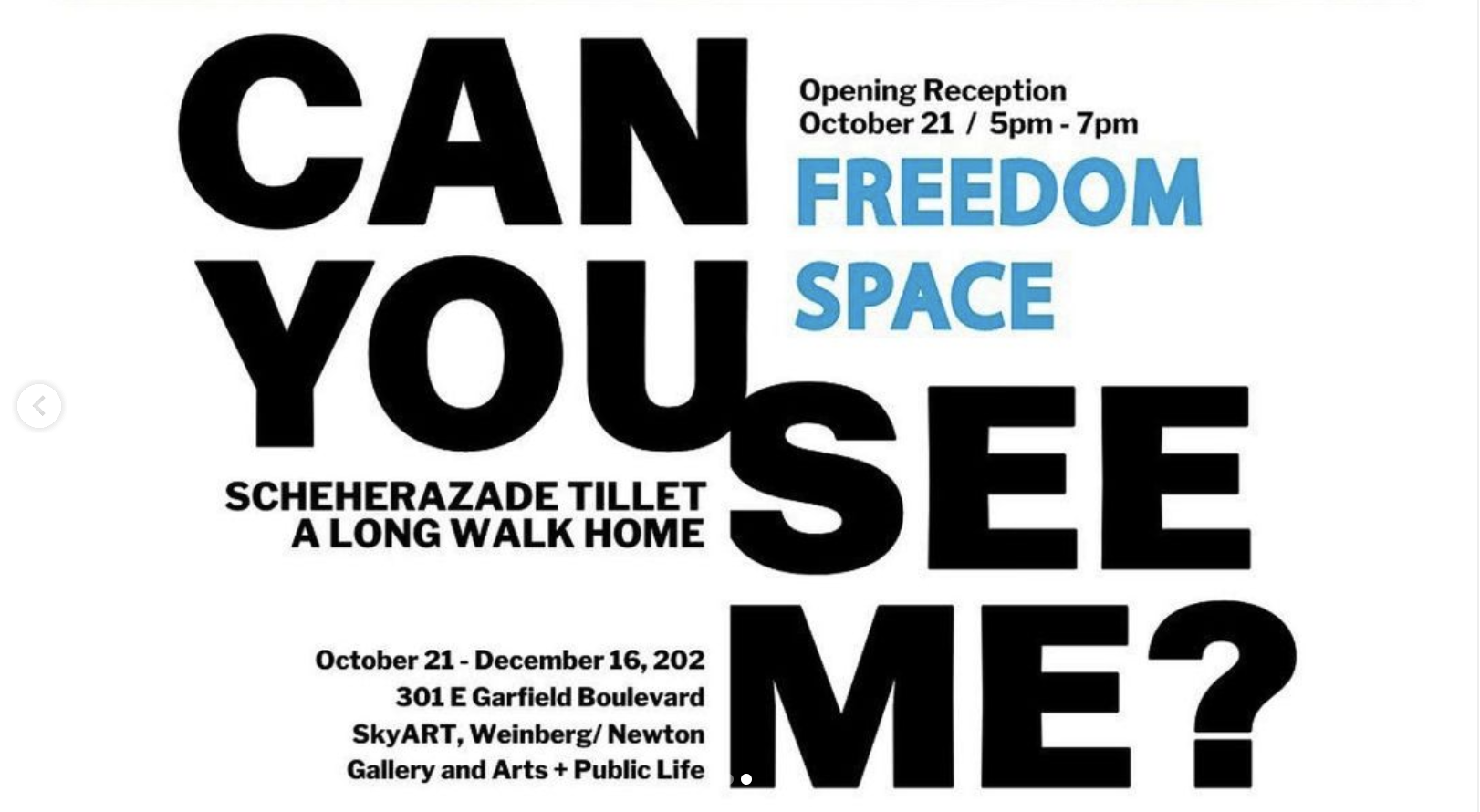
The South Side Home Movie Project is honored to participate in Can You See Me?, a collaborative three-part exhibition exploring the impact incarceration has on young people. Across three galleries, artwork by incarcerated young people, contemporary artists, and arts-justice organizations will explore themes of ascendance, innocence, and freedom. The exhibition aims to not only highlight the humanity and potential of young people affected by the juvenile justice system, but to create new aspirational possibilities for how art can be a tool of justice and healing.
For the FREEDOM SPACE exhibition at the APL Gallery, SSHMP was invited by Scheherazade Tillet (@sherphotographs), the co-founder and Executive Director of A Long Walk Home (@alongwalkhome), a Chicago-based national nonprofit that uses art to educate and empower young people to end violence against women and girls, to contribute clips from several home movies that feature uplifting scenes of young sisters. Scenes from the Ellis McClelland Collection, David D. and Margaret T. Pitts Collection (1940s-1960s), the Dr. George Reed Jr. Collection (1950s-1960s), the Buford Family Collection (1950s-1970s) and the Alsup Smith Family Collection (1970s-1980s) are featured in the exhibition.
Alongside a selection of Tillet’s images as well as works from her personal collection, archival footage from the South Side Home Movie Project, and an imprint made by incarcerated youth in SkyART's Just-Us program, FREEDOM SPACE imagines a moment without confinement, violence, or oppression. Rather she seriously considers what Black life, especially those of Black girls and young women, would be like if our past social movements had been able to achieve their freedom dreams. What would it mean if Black people could move about freely – without the threat of elimination, incarceration, or historical erasure?
Inspired by two rare civil rights photographs: Malcolm Lauredo’s 1964 Martin Luther King Jr. swimming in a Miami pool and Doris Derby's 1968 photo of civil rights workers resting at a Tougaloo farm, the main exhibition space is divided into two distinct areas: the seaside and the grassland.
With photographs from Tillet’s ongoing series on Black girlhood, images by Black girls and gender non-conforming youth whom she taught in Sierra Leone, South Africa, and Chicago, contemporary African Diasporic artists, such as Luvuyo Equiano Nyawose and Kim Hill, who focus on Black leisure, this exhibition is intentionally interdisciplinary and intergenerational. With its artificial grass, water fountain, and hand-woven outdoor furniture, it blurs the lines between what is exterior and interior to reclaim the Black outdoors and rethink history and the ways African-Americans have been denied freedom.
This interactive exhibition shares answers from Tillet's interviews about freedom with Black girl artist-activists, her non-profit organization, A Long Walk Home, and incarcerated youth from SkyART, while asking its viewers to engage in a restorative practice of meditating on the meaning of freedom.




